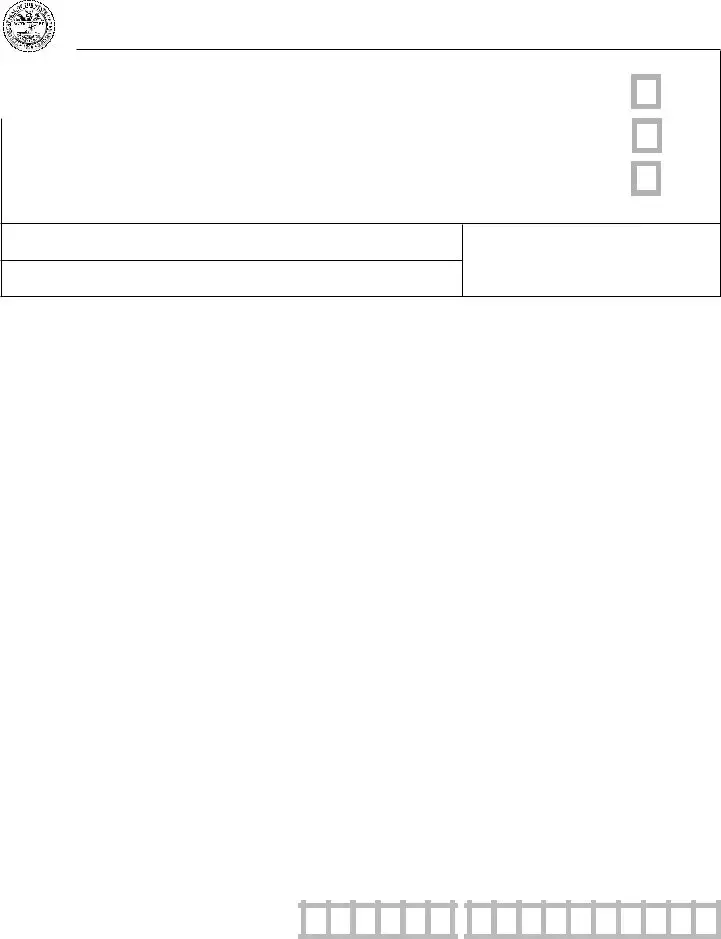The Form 1040 used for individual income tax returns by the IRS shares similarities with the 450 Tennessee form in structure and purpose. Both forms require taxpayers to report income, calculate deductions, and determine the amount of tax owed or refund due. They are designed to collect revenue for government operations, albeit at different levels of governance. Taxpayers are guided through a step-by-step calculation process to ensure accurate reporting of their financial obligations.
State sales tax forms from other states, such as the California Sales and Use Tax Return, bear a resemblance to the Tennessee 450 form in their function to report and remit taxes collected from sales. Both types of forms include sections for reporting gross sales, taxable sales, exemptions, and calculations of taxes owed. They serve a regulatory function, ensuring businesses comply with state laws regarding the collection and remittance of sales tax.
The VAT Return forms used in countries with a Value-Added Tax system parallel the 450 Tennessee form in their role in tax administration. While the specifics of VAT differ from sales tax in the U.S., both form types are used to report taxable transactions and calculate the tax due. These forms are critical for businesses to navigate and comply with their respective tax systems, ensuring the accurate flow of revenue to the government.
The Business License Renewal forms, which businesses may need to submit annually or biannually depending on jurisdiction, share a common purpose with the 450 Tennessee form in terms of regulatory compliance. While focusing on the licensing aspect, these forms often include sections related to sales and use tax, highlighting the business's financial and operational statuses over the reporting period.
Quarterly Federal Excise Tax Return forms, like the IRS Form 720, are similar to the Tennessee 450 form in that they address the taxation of specific goods and services at the federal level. Both forms require detailed reporting on the types of items or services sold, tax rates applied, and the calculation of taxes owed. These forms are essential tools for implementing tax policies on specific economic activities.
Employer's Quarterly Federal Tax Return forms, such as the IRS Form 941, are used to report payroll taxes and are similar to the Tennessee 450 form in their periodic nature and the requirement for detailed financial reporting. Businesses must accurately report amounts relating to income, social security, and Medicare taxes, akin to the way sales and use taxes are reported on the 450 form.
The Unemployment Insurance Tax forms, required by state governments, share purposes with the Tennessee 450 in monitoring and collecting taxes critical to funding specific government programs. These forms are crucial for the administration of unemployment benefits, requiring employers to report wages paid and taxes owed on behalf of their workers.
Property Tax Declaration forms, which property owners submit to local taxing authorities, resemble the 450 Tennessee form by mandating the reporting of values and calculation of taxes due. These forms contribute to the funding of local services and infrastructure, requiring detailed information about property characteristics and ownership.
The Fuel Tax Report forms required by states for the reporting of taxes on fuel sales or usage are comparable to the Tennessee 450 form. Businesses involved in the sale or distribution of fuel must meticulously report quantities sold and taxes owed, ensuring compliance with state regulations and the proper collection of revenues designated for transportation and infrastructure funding.
Finally, the Gross Receipts Tax forms, used in certain jurisdictions instead of or in addition to sales tax, resemble the Tennessee 450 form in how they assess business activity. These forms require businesses to report their total revenue, applying tax rates to gross receipts rather than specific sales transactions, illustrating another method by which states collect revenue for public services.

